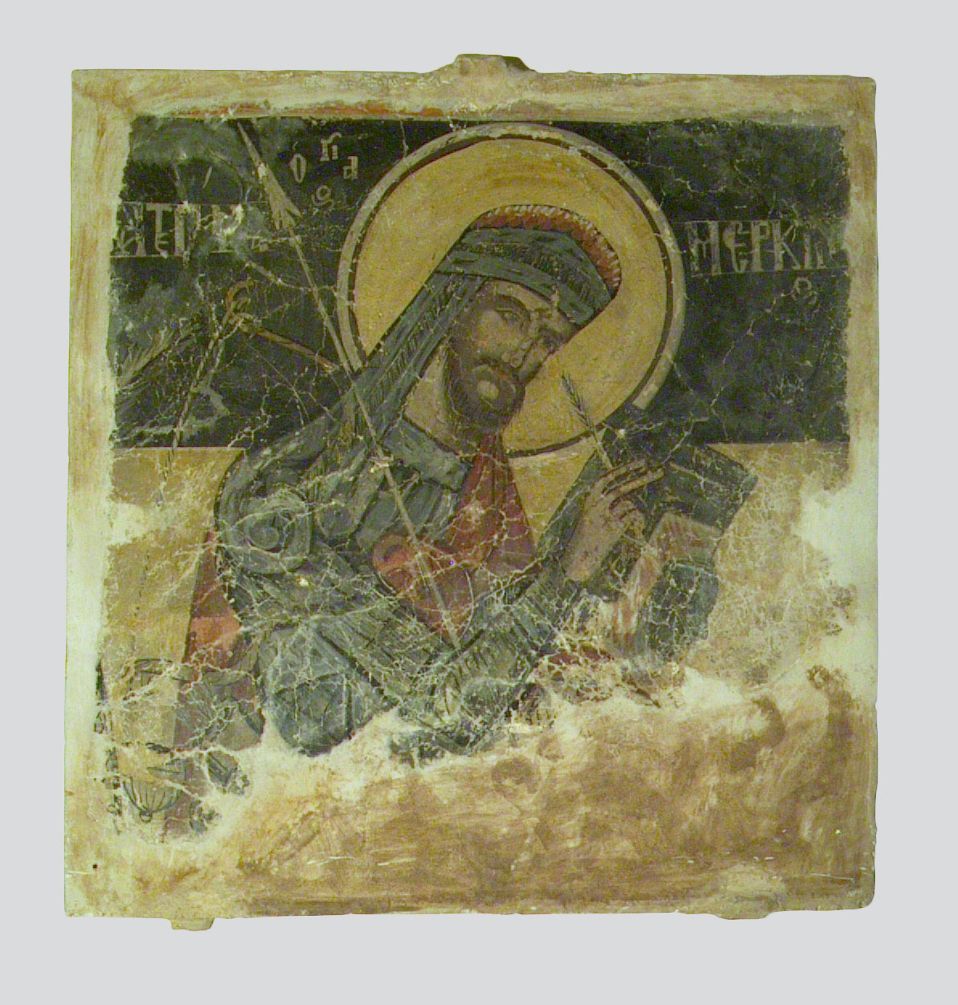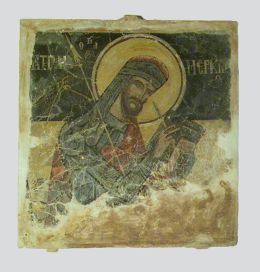From the Christian Delphi
It is a part of a wall painting, placed on plaster basis. Initially, the Virgin was depicted in half-body, praying, with young Christ in a cylindrical medallion on her chest. She was flanked by two angels, also in medallions. The painting had the inscription M(HTH)P Θ(E)OY H ΠΛATYTEPA TΩN OYPANΩN (Mother of God wider than Heavens).
Initially, the wall painting decorated the Katholikon, i.e., the main church, of the Monastery of the Dormition in Delphi. In 1896 the theologian and archaeologist Georgios Lampakis visited the monument; he characterized it as "an invaluable museum of Christian art", and he took photographs of it that now are providing valuable evidence to the scholar. In 1898, the katholikon and the surrounding buildings were demolished because the French Archaeological School was conducting an excavation around the ancient Gymnasium. According to Th. Homolle, the Director of the School, at the time, the church had its wall decoration almost intact; he was the one who published the two inscriptions, according to which the monument was built in 1743 and decorated in 1751.
In the Museum there are two other ensembles of detached wall paintings, whose origin was initially in doubt. The first, according to the Museum’s catalogues, was from a church in Atalanti which had been destroyed in 1894. The second came from Delphi, and part of it had already been linked to the Church of the Virgin. But, recently, after a detailed search in the photographic archive of the French Archaeological Society, it has been proven that some of the wall paintings thought of having come from Atalanti, were in reality from the Katholikon of the Dormition Monastery, from the Church of Hagios Nikolaos, and from other Christian monuments of Delphi. We thus managed to determine the true origin of the objects and in large part reconstruct the iconographic programmes of the two churches.

